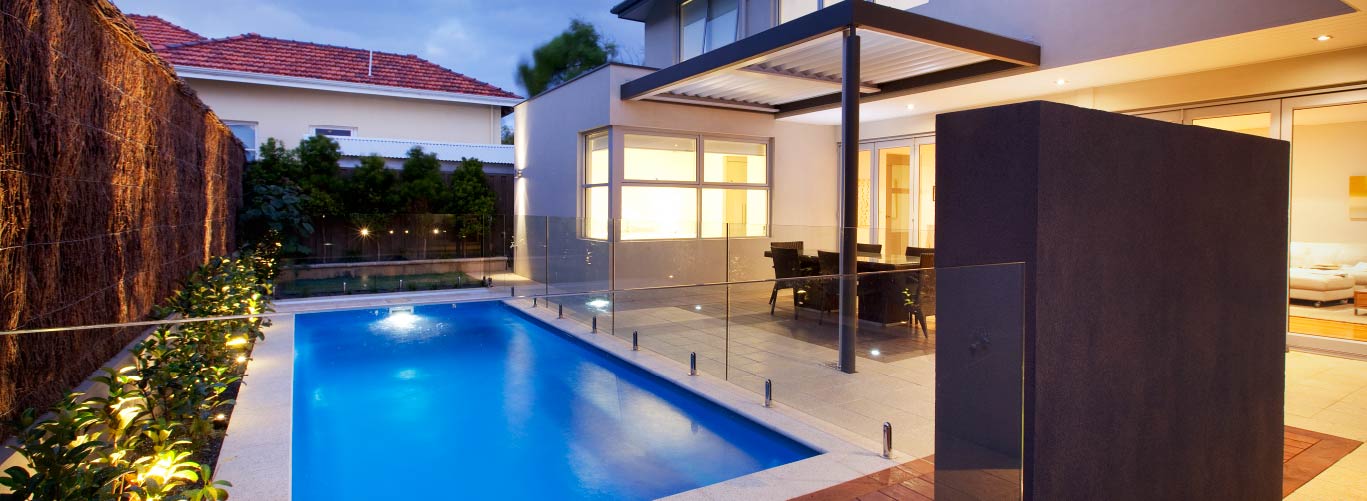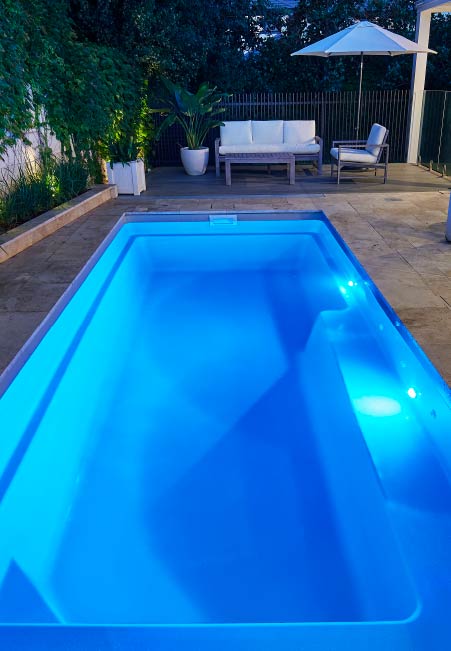Common Poolside Erosion Issues And How To Prevent Them
Your pool is more than just a place to cool off on hot days—it's a central feature of your backyard, a hub for family gatherings, and a significant investment in your home's value. However, many pool owners face the silent threat of poolside erosion, which can compromise the integrity and aesthetic appeal of their pool area. Understanding poolside erosion and knowing how to prevent it is essential for maintaining a beautiful and functional pool area. In this post, we’ll delve into the common causes of poolside erosion, identify tell-tale signs, and offer practical solutions to help you protect your backyard paradise.

Common Causes of Poolside Erosion
Heavy Rain and Improper Drainage
One of the primary culprits behind poolside erosion is heavy rainfall combined with inadequate drainage systems. When water accumulates around your pool without a proper exit route, it can lead to soil displacement and weakening of the pool’s structure. This is particularly problematic in areas prone to frequent storms or heavy downpours. Without effective drainage, rainwater can erode the soil and create sinkholes or uneven surfaces around the pool, leading to costly repairs.
To prevent damage, consider installing French drains or channel drains around your pool. These systems help divert excess water away from the pool area, preserving the soil’s stability and preventing erosion.
Use of Harsh Pool Chemicals
Maintaining a chemically balanced pool is crucial for keeping the water clean and safe for swimming. However, excessive use of harsh chemicals can have unintended consequences on the surrounding environment. Chemicals like chlorine and acid can seep into the ground, affecting the soil’s composition and causing it to become loose or unstable.
To mitigate this, always follow the recommended guidelines for chemical usage and storage. Opt for eco-friendly and less abrasive alternatives when possible. Regular testing of your pool water will help ensure that you’re using the correct amount of chemicals, protecting both your pool and its surroundings.
Lack of Proper Pool Maintenance
Neglecting routine pool maintenance is another significant factor contributing to poolside erosion. Without regular checks and upkeep, minor issues can escalate into significant problems. For instance, a small crack in the pool deck left unattended can allow water to seep into the soil, exacerbating erosion over time.
Establishing a consistent maintenance schedule is key. This includes regular inspections of the pool deck, immediate repair of any visible cracks or damage, and ensuring that the pool’s water levels and chemical balance are maintained. Proactive maintenance can save you from the headaches and expenses of extensive erosion damage down the line.

Signs of Poolside Erosion
Cracks in the Pool Decking
One of the most obvious signs of poolside erosion is the appearance of cracks in the pool decking. These cracks can range from small hairline fractures to more extensive splits and gaps. They often occur when the soil beneath the deck shifts or washes away, causing the concrete or tiles to lose their support and crack under pressure.
If you notice any cracks, regardless of size, it’s crucial to address them promptly. Not only do they indicate potential erosion issues, but they can also pose safety hazards to swimmers. Seal the cracks with appropriate materials and consider consulting a professional to assess the extent of the damage and recommend further preventative measures.
Uneven Areas Around the Pool
Uneven surfaces or sunken areas around your pool are tell-tale signs of erosion. These irregularities occur when the soil beneath the pool deck or surrounding landscape erodes, creating voids that cause the surface to settle unevenly. This not only affects the aesthetic appeal of your pool area but can also lead to tripping hazards and further structural damage.
Regularly inspect the area around your pool for any signs of unevenness. Addressing these issues early on can prevent more severe erosion and costly repairs in the future. If necessary, a professional landscaper or pool contractor can help re-level the affected areas and implement erosion control measures.
Washed-Out Soil or Sand
Another common sign of poolside erosion is the presence of washed-out soil or sand near the pool. You might notice patches of bare soil where grass or other vegetation used to be, or see sand collecting in certain areas after heavy rain. This indicates that the topsoil is being displaced and washed away, leaving the underlying ground exposed and vulnerable.
To combat this, reinforce the soil with ground cover plants or mulch, which can help hold the soil in place. Additionally, ensure proper drainage solutions are in place to redirect water flow and minimise soil displacement. Regularly adding fresh soil or sand to affected areas can also help maintain the stability of the ground around your pool.

Preventive Measures to Combat Poolside Erosion
Proper Drainage Solutions
Effective drainage is crucial to prevent poolside erosion. Without it, water can accumulate and erode the soil, causing structural damage and safety hazards. Installing systems like French drains or channel drains can divert water away from your pool area, preserving the soil’s integrity.
Integrate these solutions into your pool’s design from the start. For existing pools, consult a professional to assess and improve drainage. Regularly clean and maintain these systems to ensure they work effectively, especially before and after heavy rainfall.
The Use of Pool-Friendly Materials
Choosing the right materials for your pool area impacts its durability and resistance to erosion. Opt for durable, weather-resistant materials like concrete pavers, natural stone, and composite decking.
These materials enhance your pool area’s appeal and resist water and chemical exposure. Using erosion control fabrics under paving stones can stabilise the soil and prevent shifting. Always prioritise quality and durability when selecting pool materials.
Regular Pool Maintenance and Inspection
Consistent maintenance and inspections are key to preventing poolside erosion. Establish a routine to check for cracks, uneven surfaces, and signs of washed-out soil, and address issues promptly to avoid bigger problems.
Consider hiring a professional for thorough periodic assessments. They can identify hidden issues and recommend solutions. Proactive pool maintenance saves time, money, and stress in the long run.
The Importance of Preventing Poolside Erosion
Preventing poolside erosion is crucial for maintaining the beauty, safety, and functionality of your pool area. By understanding the common causes of erosion, recognizing the signs, and implementing preventive measures, you can protect your investment and enjoy your backyard oasis for years to come.
By taking these steps, you can ensure that your pool remains a source of joy and relaxation for you and your loved ones, free from the worries of erosion-related damage. Here’s to many more seasons of happy swimming and poolside fun!
Common Poolside Erosion Issues And How To Prevent Them
Your pool is more than just a place to cool off on hot days—it's a central feature of your backyard, a hub for family gatherings, and a significant investment in your home's value. However, many pool owners face the silent threat of poolside erosion, which can compromise the integrity and aesthetic appeal of their pool area. Understanding poolside erosion and knowing how to prevent it is essential for maintaining a beautiful and functional pool area. In this post, we’ll delve into the common causes of poolside erosion, identify tell-tale signs, and offer practical solutions to help you protect your backyard paradise.

Common Causes of Poolside Erosion
Heavy Rain and Improper Drainage
One of the primary culprits behind poolside erosion is heavy rainfall combined with inadequate drainage systems. When water accumulates around your pool without a proper exit route, it can lead to soil displacement and weakening of the pool’s structure. This is particularly problematic in areas prone to frequent storms or heavy downpours. Without effective drainage, rainwater can erode the soil and create sinkholes or uneven surfaces around the pool, leading to costly repairs.
To prevent damage, consider installing French drains or channel drains around your pool. These systems help divert excess water away from the pool area, preserving the soil’s stability and preventing erosion.
Use of Harsh Pool Chemicals
Maintaining a chemically balanced pool is crucial for keeping the water clean and safe for swimming. However, excessive use of harsh chemicals can have unintended consequences on the surrounding environment. Chemicals like chlorine and acid can seep into the ground, affecting the soil’s composition and causing it to become loose or unstable.
To mitigate this, always follow the recommended guidelines for chemical usage and storage. Opt for eco-friendly and less abrasive alternatives when possible. Regular testing of your pool water will help ensure that you’re using the correct amount of chemicals, protecting both your pool and its surroundings.
Lack of Proper Pool Maintenance
Neglecting routine pool maintenance is another significant factor contributing to poolside erosion. Without regular checks and upkeep, minor issues can escalate into significant problems. For instance, a small crack in the pool deck left unattended can allow water to seep into the soil, exacerbating erosion over time.
Establishing a consistent maintenance schedule is key. This includes regular inspections of the pool deck, immediate repair of any visible cracks or damage, and ensuring that the pool’s water levels and chemical balance are maintained. Proactive maintenance can save you from the headaches and expenses of extensive erosion damage down the line.

Signs of Poolside Erosion
Cracks in the Pool Decking
One of the most obvious signs of poolside erosion is the appearance of cracks in the pool decking. These cracks can range from small hairline fractures to more extensive splits and gaps. They often occur when the soil beneath the deck shifts or washes away, causing the concrete or tiles to lose their support and crack under pressure.
If you notice any cracks, regardless of size, it’s crucial to address them promptly. Not only do they indicate potential erosion issues, but they can also pose safety hazards to swimmers. Seal the cracks with appropriate materials and consider consulting a professional to assess the extent of the damage and recommend further preventative measures.
Uneven Areas Around the Pool
Uneven surfaces or sunken areas around your pool are tell-tale signs of erosion. These irregularities occur when the soil beneath the pool deck or surrounding landscape erodes, creating voids that cause the surface to settle unevenly. This not only affects the aesthetic appeal of your pool area but can also lead to tripping hazards and further structural damage.
Regularly inspect the area around your pool for any signs of unevenness. Addressing these issues early on can prevent more severe erosion and costly repairs in the future. If necessary, a professional landscaper or pool contractor can help re-level the affected areas and implement erosion control measures.
Washed-Out Soil or Sand
Another common sign of poolside erosion is the presence of washed-out soil or sand near the pool. You might notice patches of bare soil where grass or other vegetation used to be, or see sand collecting in certain areas after heavy rain. This indicates that the topsoil is being displaced and washed away, leaving the underlying ground exposed and vulnerable.
To combat this, reinforce the soil with ground cover plants or mulch, which can help hold the soil in place. Additionally, ensure proper drainage solutions are in place to redirect water flow and minimise soil displacement. Regularly adding fresh soil or sand to affected areas can also help maintain the stability of the ground around your pool.

Preventive Measures to Combat Poolside Erosion
Proper Drainage Solutions
Effective drainage is crucial to prevent poolside erosion. Without it, water can accumulate and erode the soil, causing structural damage and safety hazards. Installing systems like French drains or channel drains can divert water away from your pool area, preserving the soil’s integrity.
Integrate these solutions into your pool’s design from the start. For existing pools, consult a professional to assess and improve drainage. Regularly clean and maintain these systems to ensure they work effectively, especially before and after heavy rainfall.
The Use of Pool-Friendly Materials
Choosing the right materials for your pool area impacts its durability and resistance to erosion. Opt for durable, weather-resistant materials like concrete pavers, natural stone, and composite decking.
These materials enhance your pool area’s appeal and resist water and chemical exposure. Using erosion control fabrics under paving stones can stabilise the soil and prevent shifting. Always prioritise quality and durability when selecting pool materials.
Regular Pool Maintenance and Inspection
Consistent maintenance and inspections are key to preventing poolside erosion. Establish a routine to check for cracks, uneven surfaces, and signs of washed-out soil, and address issues promptly to avoid bigger problems.
Consider hiring a professional for thorough periodic assessments. They can identify hidden issues and recommend solutions. Proactive pool maintenance saves time, money, and stress in the long run.
The Importance of Preventing Poolside Erosion
Preventing poolside erosion is crucial for maintaining the beauty, safety, and functionality of your pool area. By understanding the common causes of erosion, recognizing the signs, and implementing preventive measures, you can protect your investment and enjoy your backyard oasis for years to come.
By taking these steps, you can ensure that your pool remains a source of joy and relaxation for you and your loved ones, free from the worries of erosion-related damage. Here’s to many more seasons of happy swimming and poolside fun!


